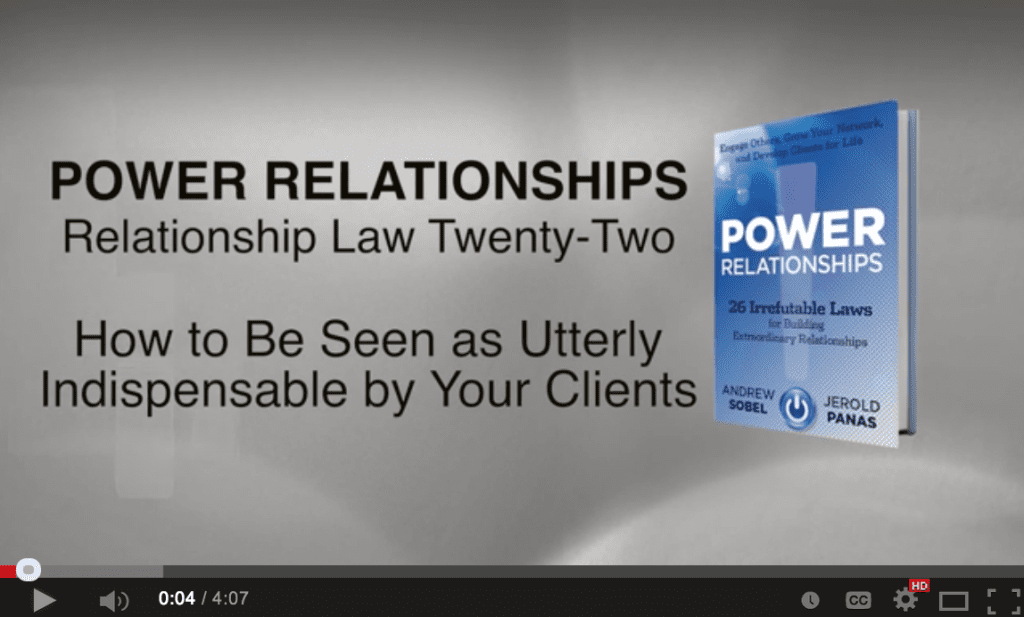
Are you part of your clients’ growth and profits? Or an expense to be managed?
Meet Ellen and Peter. They are both partners with large, well-known public accounting firms. They both went to good schools. They each have years of experience in auditing the financial statements of Fortune-500 companies. Consummate professionals.
But that’s where the similarity ends.
Ellen is a trusted advisor to the Chief Financial Officer (CFO) of her largest client. Peter, in contrast, is tearing his hair out. His principal client has been trying to cut the fee for his firm’s audit services. He struggles to even get on the CFO’s calendar.
The difference between them is very simple: Ellen’s clients see her as contributing to their growth and profits, whereas Peter’s clients view him as a cost to be managed. Ellen is a strategic advisor; Peter is a narrow expert for hire.
Read this excerpt from a conversation I had with Ellen about her client work (you can also watch my video about the powerful relationship law at the foundation of Ellen’s success, at the end of this blog):
“When I take on a new audit client, I tell the Chief Financial Officer—or, in a very large company, the Deputy CFO or SVP—that I want to have a regularly scheduled lunch every two weeks.
“The reaction is the same every time: ‘No way! I don’t need to have lunch twice a month with my auditor.’ But I insist. I tell them, ‘I do this with all my large, significant clients. They find it a very valuable practice. It will help avoid problems and highlight opportunities early on.’
“And what happens then?” I ask Ellen.
“After a couple of these lunches, my clients are hooked—they love the interaction. I use these as occasions to really learn about the CFO’s priorities and goals. I share best practices from other clients.
“We discuss everything from strategy to that new opening they have for a controller, and how we could help by suggesting some candidates. I share issues we are seeing in their field operations. I provide intelligence about their organization that other advisors can’t see because they are not close enough to the business.
“But the lunches are only part of the picture. Basically, all my exchanges with my clients are framed in the context of their big-picture goals—their growth, profitability, and innovation. I don’t want them to see our audit as a necessary evil. Rather, I want them to see me as a strategic advisor who does a terrific job each year getting their audit done smoothly and without complications.”
“How about fee pressure,” I ask Ellen. “Do your clients try and get a discount from you?”
“Well, of course, in large companies there is always a drive towards getting the lowest fees. And they do try and negotiate. But actually, I see the opposite occurring in the sense that my clients are often asking for us to do more work, not less. The more we demonstrate that we are helping to improve their business, the more frequently they reach out to us for additional services.”
Ellen and Peter are real people. The dramatically different roles they play with their clients highlight the Twenty-Second Law of Relationships from my newest book, Power Relationships: Become part of your clients’ growth and profits, and they’ll never get enough of you. The flip side of this Law is that if a client views you as an expense to be managed, they’ll cut you at any time.
What strategies have helped you become part of your client’s growth and profits? Leave a comment, below.
******
Watch my four-minute video on the Twenty-Second Law of Power Relationships, below:

